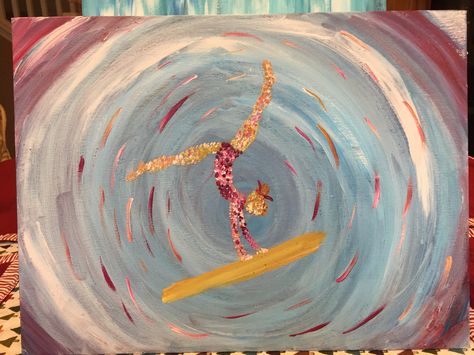Gymnastic Ideas: Creative Moves for All Skill Levels

Gymnastics is a dynamic and expressive sport that blends strength, flexibility, agility, and artistry. Whether you’re a beginner or an advanced athlete, there’s always room to explore creative moves that challenge your body and spark your imagination. Below, we’ll dive into a range of gymnastic ideas tailored to all skill levels, from foundational skills to jaw-dropping sequences that push the boundaries of what’s possible.
Foundational Moves for Beginners
For those just starting out, mastering the basics is key. These moves build the strength and coordination needed for more advanced techniques.
1. Forward Roll
A classic gymnastic move, the forward roll teaches body control and spatial awareness. Start in a standing position, tuck your chin, and roll forward, leading with your shoulders. Focus on keeping your body tight and rolling smoothly.
2. Cartwheel
The cartwheel is a fun and foundational move that combines balance and coordination. Begin with one leg extended, sweep your arm across, and rotate your body sideways while keeping your legs split. Practice on a soft surface until you feel confident.
3. Handstand Against the Wall
Building upper body strength is crucial in gymnastics. Start by kicking up into a handstand against a wall. Focus on keeping your body straight and your core engaged. Gradually decrease your reliance on the wall as you gain control.
Intermediate Moves to Build Confidence
Once the basics are solid, intermediate moves introduce more complexity and creativity.
"Intermediate gymnasts should focus on combining strength and flexibility. Moves like the back walkover and roundoff lay the groundwork for advanced tumbling and acrobatic sequences."
4. Back Walkover
This move requires flexibility in the back and shoulders. Start in a standing position, arch backward, and walk your hands to the floor, rolling over your spine. Use a mat or spotter for safety until you’re comfortable.
5. Roundoff
A staple in tumbling, the roundoff is a dynamic move that propels you forward. Begin with a cartwheel-like motion, but instead of splitting your legs, bring them together and push off the floor with your hands, landing on both feet.
6. Front Handspring
A front handspring is a challenging yet rewarding move. Start in a lunge position, kick your front leg up, and push off the floor with your hands, flipping forward and landing on both feet. Practice with a spotter initially.
Advanced Moves for the Daring
Advanced gymnasts can explore moves that demand precision, strength, and creativity. These techniques often combine multiple skills into seamless sequences.
"Advanced gymnastics is about fluidity and control. Moves like the aerial cartwheel and back handspring series require not just physical ability but also mental focus and artistry."
7. Aerial Cartwheel
This move elevates the traditional cartwheel by removing the hand placement on the floor. Leap into the air, split your legs, and rotate sideways without touching the ground. It’s a crowd-pleaser that requires significant leg and core strength.
8. Back Handspring
A back handspring is a powerful move where you flip backward, pushing off the floor with your hands and landing on your feet. It’s often used in tumbling passes and requires a strong arch and explosive power.
9. Double Cartwheel
For those who love a challenge, the double cartwheel involves completing two full rotations in a cartwheel motion. It demands exceptional balance, flexibility, and coordination. Start slow and build up speed as you gain confidence.
Creative Sequences to Inspire
Gymnastics is as much about artistry as it is about athleticism. Combining moves into creative sequences can showcase your unique style and skills.
When designing sequences, think about flow, rhythm, and storytelling. Each move should transition smoothly into the next, creating a visually stunning performance.
Sequence Example 1: Beginner Flow
- Forward roll into a cartwheel
- Handstand hold for 3 seconds
- Finish with a backward roll
Sequence Example 2: Intermediate Combo
- Roundoff into a back walkover
- Front handspring into a split leap
- Finish with a handstand pirouette
Sequence Example 3: Advanced Showcase
- Aerial cartwheel into a back handspring
- Double cartwheel into a front aerial
- Finish with a layout step-out
Tips for Safe and Effective Practice
Do’s
- Warm up thoroughly to prevent injuries.
- Practice on soft surfaces or with a spotter.
- Break complex moves into smaller steps.
- Stay consistent with your training.
Don’ts
- Attempt advanced moves without proper preparation.
- Ignore pain or discomfort during practice.
- Rush progress; mastery takes time.
FAQ Section
How often should I practice gymnastics?
+For beginners, 2-3 sessions per week are ideal. Intermediate and advanced gymnasts may train 4-6 times weekly, focusing on strength, flexibility, and skill refinement.
What equipment do I need to start gymnastics at home?
+Basic equipment includes a yoga mat, balance beam (or a straight board), and a pull-up bar. For safety, consider adding a crash mat for tumbling practice.
Can adults learn gymnastics?
+Absolutely! Adults can learn gymnastics, though progress may be slower. Focus on flexibility, strength, and proper form to avoid injuries.
How do I improve my flexibility for gymnastics?
+Incorporate stretching into your daily routine, focusing on dynamic stretches before workouts and static stretches afterward. Yoga can also enhance flexibility.
What’s the difference between artistic and rhythmic gymnastics?
+Artistic gymnastics focuses on apparatus like the vault, bars, beam, and floor, emphasizing strength and acrobatics. Rhythmic gymnastics combines dance and gymnastics with apparatus like ribbons, hoops, and balls, focusing on grace and fluidity.
Gymnastics is a journey of self-discovery, strength, and creativity. Whether you’re mastering a forward roll or perfecting a double cartwheel, every move is an opportunity to grow. Embrace the process, stay consistent, and let your imagination guide you to new heights.



